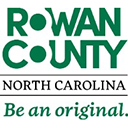Present Use Value
go.ncsu.edu/readext?892737
en Español / em Português
El inglés es el idioma de control de esta página. En la medida en que haya algún conflicto entre la traducción al inglés y la traducción, el inglés prevalece.
Al hacer clic en el enlace de traducción se activa un servicio de traducción gratuito para convertir la página al español. Al igual que con cualquier traducción por Internet, la conversión no es sensible al contexto y puede que no traduzca el texto en su significado original. NC State Extension no garantiza la exactitud del texto traducido. Por favor, tenga en cuenta que algunas aplicaciones y/o servicios pueden no funcionar como se espera cuando se traducen.
Português
Inglês é o idioma de controle desta página. Na medida que haja algum conflito entre o texto original em Inglês e a tradução, o Inglês prevalece.
Ao clicar no link de tradução, um serviço gratuito de tradução será ativado para converter a página para o Português. Como em qualquer tradução pela internet, a conversão não é sensivel ao contexto e pode não ocorrer a tradução para o significado orginal. O serviço de Extensão da Carolina do Norte (NC State Extension) não garante a exatidão do texto traduzido. Por favor, observe que algumas funções ou serviços podem não funcionar como esperado após a tradução.
English
English is the controlling language of this page. To the extent there is any conflict between the English text and the translation, English controls.
Clicking on the translation link activates a free translation service to convert the page to Spanish. As with any Internet translation, the conversion is not context-sensitive and may not translate the text to its original meaning. NC State Extension does not guarantee the accuracy of the translated text. Please note that some applications and/or services may not function as expected when translated.
Collapse ▲2023 is a tax revaluation year for Rowan County. Real Estate prices have increased since our last revaluation in 2019, so while our tax rate is not growing, the value of your property has increased, so your taxes are going to increase. I often receive calls from private landowners throughout the county struggling to pay their tax liability on their agricultural, horticultural, or timber property. In most cases, agricultural land tracts consist of both forestland and cropland. Many landowners may only be receiving income from the cropland acreage. So depending on the size of the lot and the proportion of land creating income, meeting the property tax liability can become more difficult in some situations. If this sounds like a familiar situation, I first ask, “Is your agricultural property enrolled in Present-Use Value?” The typical response is, “What is that?” Present-Use Value (PUV) is a deferred tax program available to landowners that uses the value of land in its current use as agricultural, horticultural, or forest land. It allows the qualifying working the land to be taxed at its farming value rather than its market value for development, which is the standard. Landowners must know that working land should be managed appropriately to ensure good social, environmental, and economic impacts. It is essential to note the PUV program is voluntary and must meet specific requirements. For instance, forested land requires a forest management plan to be written and carried out before it can be accepted into the program. Individual landowners must enroll their property and should not expect it to happen automatically! Also, a property previously enrolled in the PUV program must be re-enrolled within 60 days of a change in ownership. Often, landowners think land passed down in the family remains automatically enrolled.
Be aware the 60-day window still applies, and the new property owner must re-enroll in the program, or the land will be taxed at the fair-market value. Now recall I mentioned PUV is a deferred tax program. Deferred taxes are the difference between the fair market value and present-use value. Think of deferred taxes as being “put on the shelf” until the land use changes. In other words, a penalty is imposed when land is taken out of agricultural use and the deferred taxes from the previous three years are levied against the landowner. Some critics may argue against agricultural land receiving such an incentive. Some farmers may say, “my crops or livestock don’t go to school,” which reflects that agricultural land does not demand the same municipal services as other uses and should be taxed proportionately. If landowners took advantage of the Present-Use Value program, it would serve as an excellent farmland protection tool that would help keep one of the top industries in Rowan County and NC thriving for years to come. Cooperative Extension will host a PUV program workshop on November 22 at the Agricultural Center from 6 p.m.-8 p.m. Register online or call 704-216-8970 space is limited; please register by November 21.




